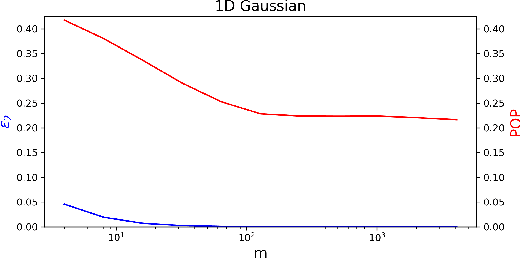Itay Eilat
Performative Recommendation: Diversifying Content via Strategic Incentives
Feb 08, 2023Abstract:The primary goal in recommendation is to suggest relevant content to users, but optimizing for accuracy often results in recommendations that lack diversity. To remedy this, conventional approaches such as re-ranking improve diversity by presenting more diverse items. Here we argue that to promote inherent and prolonged diversity, the system must encourage its creation. Towards this, we harness the performative nature of recommendation, and show how learning can incentivize strategic content creators to create diverse content. Our approach relies on a novel form of regularization that anticipates strategic changes to content, and penalizes for content homogeneity. We provide analytic and empirical results that demonstrate when and how diversity can be incentivized, and experimentally demonstrate the utility of our approach on synthetic and semi-synthetic data.
Strategic Classification with Graph Neural Networks
May 31, 2022



Abstract:Strategic classification studies learning in settings where users can modify their features to obtain favorable predictions. Most current works focus on simple classifiers that trigger independent user responses. Here we examine the implications of learning with more elaborate models that break the independence assumption. Motivated by the idea that applications of strategic classification are often social in nature, we focus on \emph{graph neural networks}, which make use of social relations between users to improve predictions. Using a graph for learning introduces inter-user dependencies in prediction; our key point is that strategic users can exploit these to promote their goals. As we show through analysis and simulation, this can work either against the system -- or for it. Based on this, we propose a differentiable framework for strategically-robust learning of graph-based classifiers. Experiments on several real networked datasets demonstrate the utility of our approach.
Strategic Classification in the Dark
Mar 06, 2021



Abstract:Strategic classification studies the interaction between a classification rule and the strategic agents it governs. Under the assumption that the classifier is known, rational agents respond to it by manipulating their features. However, in many real-life scenarios of high-stake classification (e.g., credit scoring), the classifier is not revealed to the agents, which leads agents to attempt to learn the classifier and game it too. In this paper we generalize the strategic classification model to such scenarios. We define the price of opacity as the difference in prediction error between opaque and transparent strategy-robust classifiers, characterize it, and give a sufficient condition for this price to be strictly positive, in which case transparency is the recommended policy. Our experiments show how Hardt et al.'s robust classifier is affected by keeping agents in the dark.
 Add to Chrome
Add to Chrome Add to Firefox
Add to Firefox Add to Edge
Add to Edge